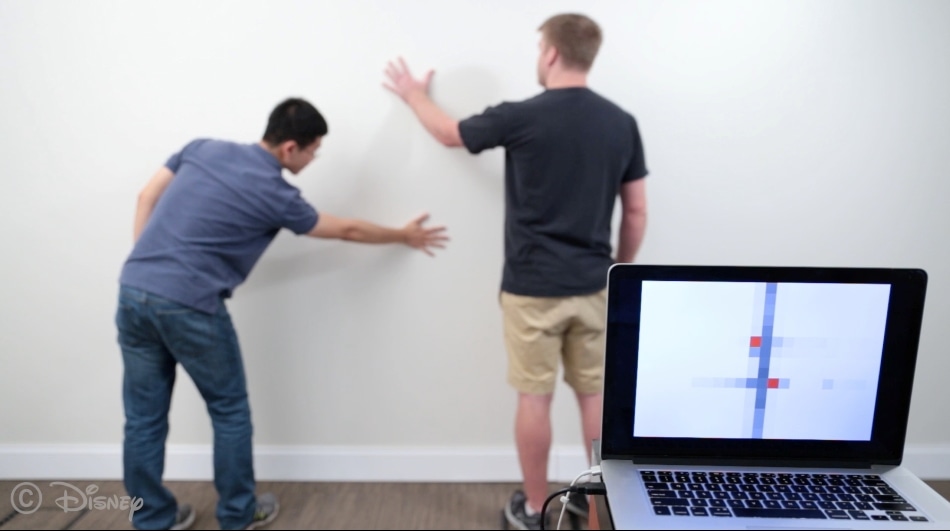Apr 25 2018
Walls are basically just big, dull dividers. But with a few coats of conductive paint and some electronics, however, walls can be transformed into smart infrastructure that senses human touch, and recognizes things like gestures and when appliances are utilized.
 Researchers at CMU and Disney Research used simple tools and techniques to transform dumb walls into smart ones. (Image credit: Carnegie Mellon University)
Researchers at CMU and Disney Research used simple tools and techniques to transform dumb walls into smart ones. (Image credit: Carnegie Mellon University)
A team of researchers at Carnegie Mellon University and Disney Research found that they could change dumb walls into smart walls at comparatively low cost—about $20/m2—using basic tools and methods, such as a paint roller.
These new capabilities might enable users to position or move light switches or other controls across a wall that's most convenient, or to play video games by using gestures. By tracking activity in the room, this system could alter light levels when a TV is switched on or alert a user in another location when an electric kettle or laundry machine turns off.
Walls are usually the largest surface area in a room, yet we don't make much use of them other than to separate spaces, and perhaps hold up pictures and shelves. As the internet of things and ubiquitous computing become reality, it is tempting to think that walls can become active parts of our living and work environments.
Chris Harrison, Assistant Professor in CMU's Human-Computer Interaction Institute (HCII)
Yang Zhang, a Ph.D. student in the HCII, will present a research paper detailing this sensing method, called Wall++, at CHI 2018, the Conference on Human Factors in Computing Systems held in Montreal from April 21 to 26.
The researchers discovered that they could use conductive paint to create electrodes anywhere on the surface of a wall, enabling it to serve both as a touchpad to monitor users' touch and an electromagnetic sensor to detect and monitor electrical gadgets and appliances.
"Walls are large, so we knew that whatever technique we invented for smart walls would have to be low cost," Zhang said. He and his colleagues thus dispensed with costly paints, such as those comprising silver, and chose a water-based paint containing nickel.
They also were keen to make it easy to apply the special coating using simple tools and without special skills. Using painter's tape, they found they could form a cross-hatched pattern on a wall to produce a grid of diamonds, which testing proved was the most effective electrode pattern. After two coats of conductive paint using a roller, they removed the tape and linked the electrodes. The wall was then given a top coat of regular latex paint to enhance durability and conceal the electrodes.
The electrode wall can work in two modes—electromagnetic (EM) sensing and capacitive sensing. In EM sensing mode, the electrode can detect the characteristic electromagnetic signatures of electrical or electronic gadgets, enabling the system to identify the devices and where they are located. In capacitive sensing, the wall works like any other capacitive touchpad: when a person touches the wall, the touch alters the wall's electrostatic field at that point.
Likewise, if a person is wearing a device that releases an EM signature, the system would be able to track the location of that person, Zhang added.
Wall++ hasn't been enhanced for energy consumption, Zhang said, but he reckons the wall-sized electrodes guzzle about as much power as a typical touch screen.
Besides Zhang and Harrison, the research team included HCII Professor Scott Hudson, and Alanson Sample and Chouchang (Jack) Yang of Disney Research.